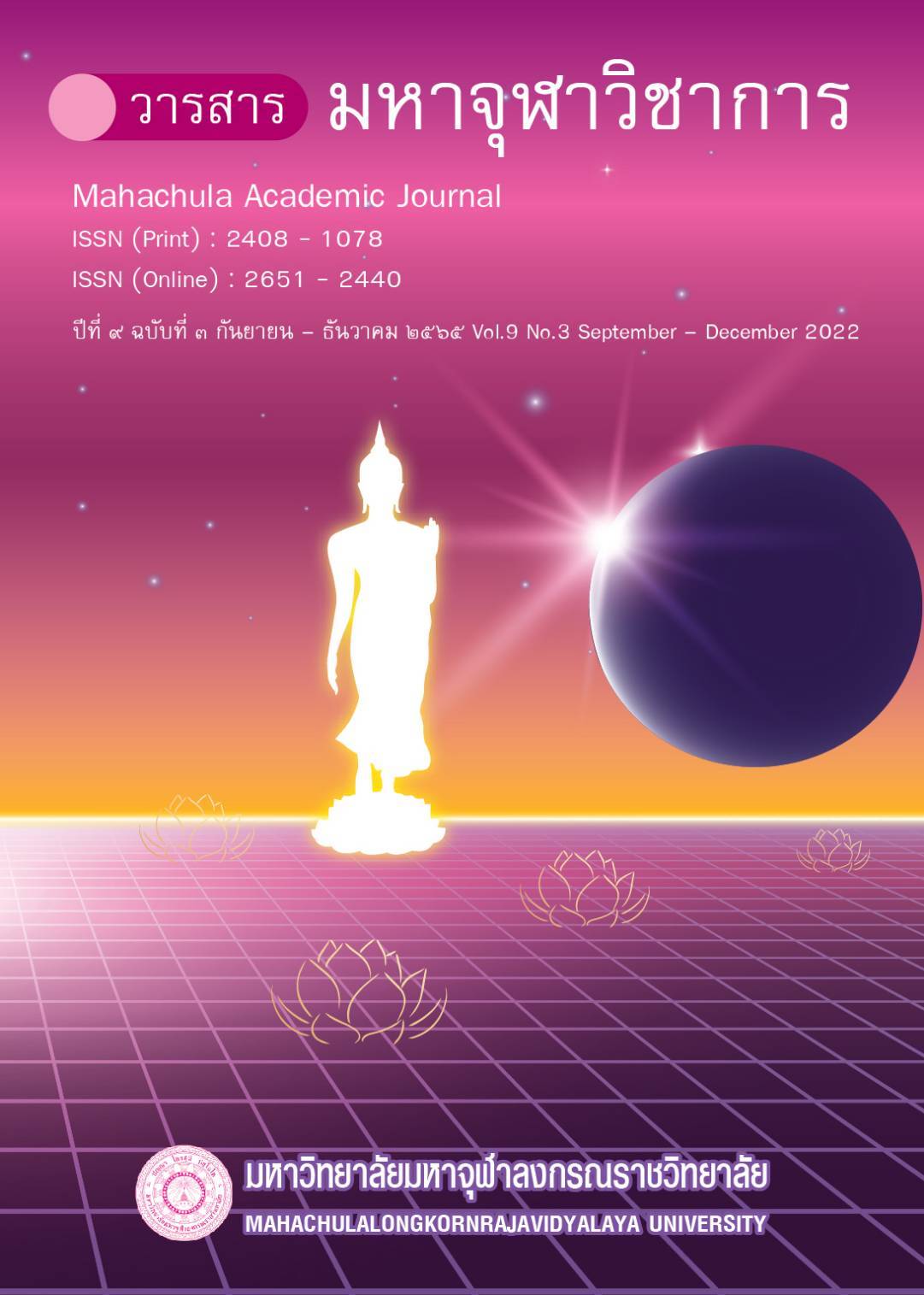Development of Augmented Reality Technology with Mathematic in topic of Problem Solving for Primary 6 (Grade 6) Students
Main Article Content
Abstract
The objectives of this research were to: (1) develop and find the efficiency of augmented reality technology in mathematics for problem solving, (2) compare the learning outcomes before and after using augmented reality technology in mathematics for problem solving, and (3) the students' satisfaction with augmented reality technology in mathematics for problem solving. The sample group used in this research were 32 students in grade 6 at Wat Khian Khet School, by using simple random sampling. The tools used in the research consisted of (1) learning media, (2) learning management plan, (3) pre-study and post-study tests, and (4) a questionnaire to assess students’ satisfaction towards learning with augmented reality technology in mathematics for problem solving. The statistics used in the data analysis were mean, percentage, standard deviation, and media performance.
The results were as follows: (1) augmented reality technology with mathematics in problem solving for grade 6 students, the average efficacy was 82.03/83.59 which meets the standard criteria; (2) the learning outcomes of students after learning was higher than before learning with a statistically significant difference at the .05 level; and (3) students' satisfaction with augmented reality technology in mathematics for problem solving was at the highest level.
Article Details

This work is licensed under a Creative Commons Attribution-NonCommercial-NoDerivatives 4.0 International License.
References
กระทรวงศึกษาธิการ. “หลักสูตรแกนกลางการศึกษาขั้นพื้นฐาน พุทธศักราช ๒๕๕๑ (ฉบับปรับปรุง พ.ศ. ๒๕๖๐)”. กรุงเทพมหานคร : โรงพิมพ์ชุมนุมสหกรณ์การเกษตรแห่งประเทศไทย, ๒๕๖๐.
ชาติชวลิต วรรณขาว. “ผลการใช้สื่อความจริงเสริมที่มีต่อการเรียนรู้ในรายวิชาวิทยาศาสตร์ เรื่อง ระบบสุริยะ สำหรับนักเรียนชั้นประถมศึกษาชั้นปีที่ ๔”. วารสารศึกษาศาสตร์. ปีที่ ๒๒ ฉบับที่ (๒๕๖๓) : ๕๐.
วรางคณา สำอางค์. “การจัดการเรียนการสอนโดยใช้กระบวนการแก้ปัญหาตามแนวคิดของโพลยาเรื่องการแยกตัวประกอบของพหุนามของนักเรียนชั้นมัธยมศึกษาปีที่ ๓”. วารสารมนุษยศาสตร์และสังคมศาสตร์บัณฑิตวิทยาลัย. มหาวิทยาลัยราชภัฏพิบูลสงคราม. ปีที่ ๑๑ ฉบับที่ ๑ (มกราคม–มิถุนายน ๒๕๖๐) : ๕๘.
วิลดา หอมจันทร์. “การพัฒนาความสามารถ เรื่องจำนวนนับ สำหรับนักเรียนที่มีปัญหาทางคณิตศาสตร์ระดับชั้นประถมศึกษาปีที่ ๓ โดยวิธีการสอนตรงร่วมกับเทคโนโลยีความจริงเสมือน”. วิทยานิพนธ์ปริญญามหาบัณฑิต. มหาวิทยาลัยศรีนครินทรวิโรฒ, ๒๕๖๓.
สุรัตนาพร ศักดิ์อุดมทรัพย์. “ผลการใช้เทคโนโลยีความจริงเสริมร่วมกับการจัดกิจกรรมการเรียนรู้ KWDL ที่มีต่อความสามารถในการแก้โจทย์ปัญหาคณิตศาสตร์ ของนักเรียนชั้นประถมศึกษาปีที่ ๓”. วิทยานิพนธ์ปริญญามหาบัณฑิต. มหาวิทยาลัยศิลปากร, ๒๕๖๐.
Polya ,G. How to solve It: A new aspect of mathematical method (2nd ed). New York: Doubleday and Company, 1957.
สถาบันทดสอบทางการศึกษาแห่งชาติ. “สรุปผลการทดสอบทางการศึกษาระดับชาติขั้นพื้นฐาน (O-NET) ชั้นประถมศึกษาปีที่ ๖ ปีการศึกษา ๒๕๖๓”.[ออนไลน์]. แหล่งที่มา: https://urlty.co/wMD [๑๕ มกราคม ๒๕๖๔].
สุรศักดิ์ สงวนพงษ์. “แผนยุทธศาสตร์เทคโนโลยีสารสนเทศ มหาวิทยาลัยเกษตรศาสตร์ ปี พ.ศ. ๒๕๕๗-๒๕๖๐”. [ออนไลน์]. แหล่งที่มา: https://bit.ly/3CBecJE [๑๕ มกราคม ๒๕๖๔].
Maureen, Hance. “3 Ways Augmented Reality Is Wowing Teachers and Students”. [ออนไลน์]. แหล่งที่มา: https://bit.ly/3Kpy0Se [๑๕ มกราคม ๒๕๖๔].


